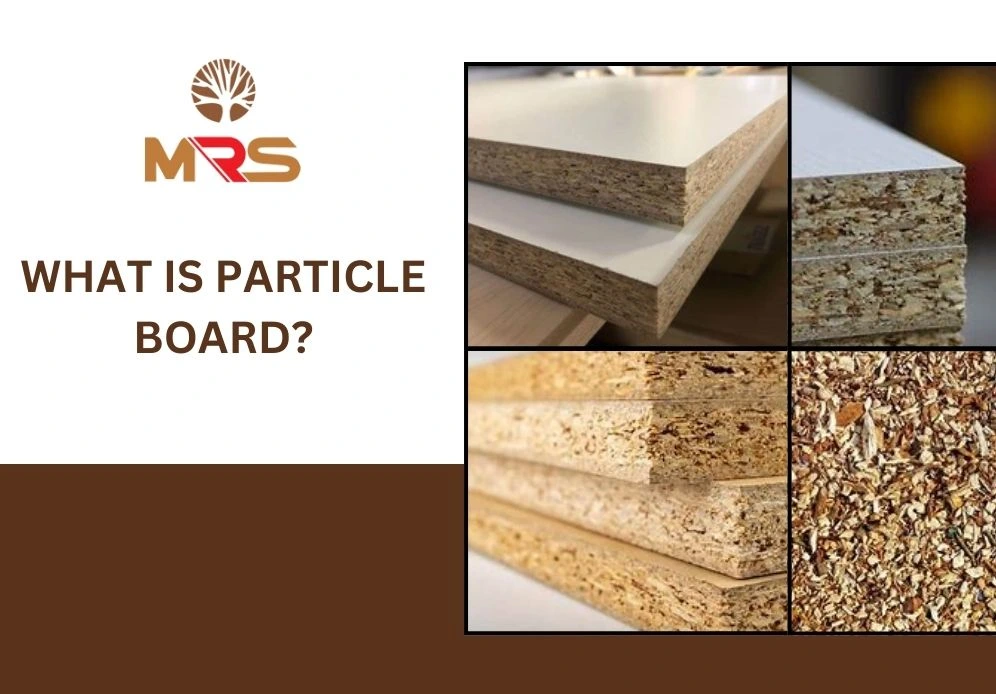Particle board, a versatile engineered wood product, is a staple in modern furniture and construction. Made from wood chips, sawdust, and resin, it’s a cost-effective alternative to traditional solid wood. But what makes it so widely used?
Let’s explore its composition, applications, advantages, and more.
Types of Particle Board
Particle board is a versatile and cost-effective engineered wood product that has gained popularity for its widespread applications in furniture, flooring, and construction.
Made by compressing wood particles, sawdust, and resin under heat and pressure, particle board is available in several types, each tailored to specific uses.
Understanding the different types of particle board is essential for selecting the right material for your project. Let’s delve into the most common varieties and their unique characteristics.
- Raw Particle Board: Basic and unfinished, suitable for areas requiring custom finishes.
- Pre-Laminated Particle Board: Coated with decorative laminates for an aesthetic appeal.
- Melamine Particle Board: Enhanced with melamine resin for durability and moisture resistance.
Each type serves specific needs, ranging from furniture making to interior design projects.
Advantages and Disadvantages of Particle Board
Particle board is a popular material in the furniture and construction industries due to its affordability and versatility. However, it also has its limitations. Here’s a detailed look at its pros and cons to help you decide if it suits your needs.
Advantages of Particle Board
- Cost-Effective
Particle board is significantly cheaper than solid wood, making it a budget-friendly option for home and office furniture. Its affordability makes it an ideal choice for large-scale projects without compromising aesthetics.
- Eco-Friendly
Manufactured from recycled wood particles and sawdust, particle board minimizes waste and promotes sustainability. Choosing this material supports eco-friendly practices in the woodworking industry.
- Versatile Applications
Its smooth surface is perfect for laminates, veneers, and paints, allowing a variety of finishes. This versatility makes particle board suitable for furniture, cabinets, and shelving in both residential and commercial spaces.
- Lightweight
Being lighter than plywood or solid wood, particle board is easier to handle and transport. This makes it a convenient option for DIY projects and installations.
Disadvantages of Particle Board
- Less Durable
Particle board lacks the strength of natural wood and is susceptible to damage. Exposure to moisture can lead to swelling and weakening, making it unsuitable for damp environments.
- Weight Limitations
While it’s lightweight, particle board cannot support heavy loads. Using it for shelves or surfaces that bear significant weight may lead to sagging or breaking.
- Limited Lifespan
Over time, particle board tends to chip, swell, or deteriorate, especially if not properly maintained. Its lifespan is shorter compared to materials like plywood or hardwood.
Understanding these pros and cons helps determine whether particle board is suitable for your project.
Is Particle Board Durable?
Durability is a key concern when choosing materials. While particle board isn’t as robust as plywood or solid wood, it holds up well in controlled environments. Pre-laminated particle boards and melamine variants improve its resilience, making it a practical option for low-impact furniture.
What Is Particle Board Used For?
Particle boards are popular in residential and commercial settings. Common uses include:
- Furniture: Ideal for particle board furniture like desks, cabinets, and wardrobes.
- Flooring: Serves as a base layer under flooring materials.
- Decorative Panels: Adds a stylish touch to walls and ceilings.
Its lightweight nature and affordability make it a preferred material for large-scale projects.
Particle Board Composition: What Makes It Unique?
The composition of the particle board includes wood residues and binding resin, giving it a uniform texture. This composition ensures smooth surfaces for laminates or veneers, making it versatile for custom designs.
Particle Board Sizes and Sheets
Particle boards are available in various sizes and thicknesses to suit different needs. Common particle board sheet sizes include:
- 4×8 Feet Sheets: Ideal for large-scale furniture or paneling.
- Custom Sizes: Tailored dimensions for specific projects.
Thickness typically ranges from 6mm to 25mm, offering flexibility for various applications.
Pre-Laminated Particle Board: A Popular Choice
Pre-laminated particle boards come with ready-to-use decorative finishes, eliminating the need for additional surface treatments. They are available in numerous designs and colors, making them a go-to choice for modern furniture and interiors.
How Is Particle Board Made?
The process involves:
- Collecting and cleaning wood waste.
- Mixing wood chips and resin.
- Compressing the mixture under heat and pressure.
- Sanding and finishing the surface.
This efficient process reduces waste and produces a consistent, usable product.
Particle Board Price: Budget-Friendly Options
The affordability of particle boards varies by type and size. On average, the price ranges from $10 to $50 per sheet, depending on thickness and finish. Pre-laminated options cost slightly more due to their decorative surfaces.
Conclusion
Particle board is a cost-effective, versatile material with applications in furniture, construction, and décor. While it has limitations in durability, its affordability and adaptability make it a preferred choice for budget-friendly projects. Whether you’re building furniture or designing interiors, particle board offers a practical and stylish solution.
Frequently Asked Questions?
What Is Particle Board Used For?
Particle board is used in furniture, flooring, and interior décor due to its affordability and versatility.
Is Particle Board Durable?
While not as durable as solid wood, particle board is suitable for low-impact furniture and pre-laminated variants offer enhanced resilience.
Is Particle Board Good For Bed Frames?
Yes, but reinforced designs are recommended for added strength and durability.
What Is a Pre-Laminated Particle Board?
It’s a particle board coated with decorative laminates, ready for immediate use without additional finishing.

